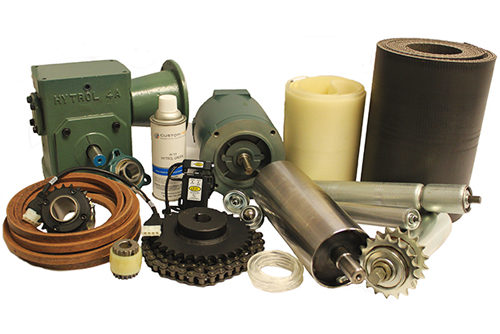
BEST PRACTICES WHEN STOCKING SPARE PARTS
By Olivia Harper
Stocking spare parts are essential to the upkeep of material handling systems. It is no surprise that stuff happens… and when it does, it helps to be prepared.
It is not practical to have every single part on hand so you must ask yourself, what parts are critical. To determine this, you must consider three things:
- How urgent is it to fix the equipment? Every hour the equipment is down, money is lost. If a certain part is paramount to functionality, it is likely a good idea to have it on your critical spare parts list.
- How will the impaired equipment impact the operation? If production is halted or limited, then it is wise to consider stocking the part.
- What is the lead time of the needed part? If the lead time is anything longer than two weeks and the absence of the part significantly impedes production, it is advised to stock the particular part.
In many cases, conveyor suppliers or distributors can expedite the part, but at the cost of a hefty overnighting fee. No matter what, you’re looking at high overnight freight costs and production downtime.
In addition to knowing what parts are critical to have stocked, it is equally important to have these parts organized and maintained. Each individual part must have a bin location labeled with the serial number and a record showing what has been used and what needs to be replaced. When you use a replacement part, there should be another one promptly ordered.
Stocking and organizing spare parts can be complex and it’s different among companies. At Conveyors & Drives, our Inside Sales and Customer Service team is here to walk you through it. Together, we will find the most efficient and affordable solution to keep your production moving. Click the button below or call us at 1-877-355-1511 for a free consultation.





